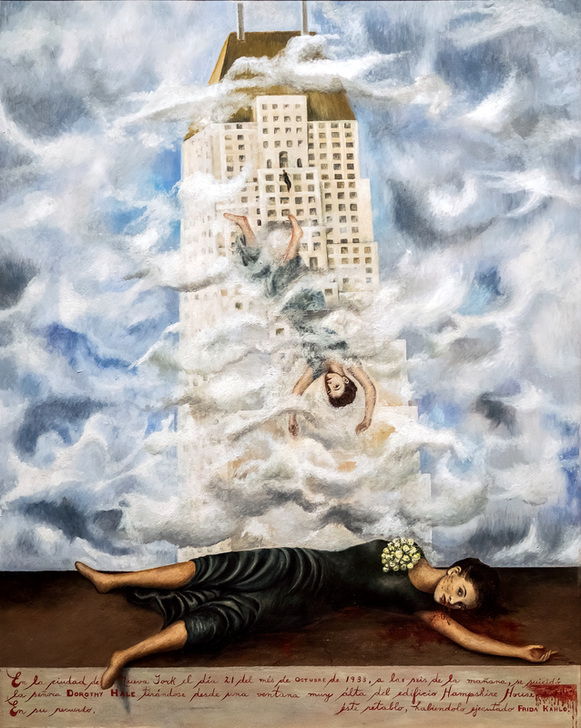Frida Kahlo and The Suicide of Dorothy Hale
27 May 2022

Dorothy Hale was an American actress and Ziegfeld showgirl. Extraordinarily beautiful, but unfortunately possessing little talent, her career was a succession of rejections and failures in the entertainment industry. When her husband's car went over a Santa Maria cliff in December 1931, she was left with severe financial difficulties. Unable to maintain her high-society lifestyle, Hale became dependent on the benevolence of wealthy lovers and generous friends, such as writer and socialite Clare Boothe Luce, with whom she was close.
On October 21, 1938, Hale jumped to her death from the top window of her luxury apartment suite in New York in her favourite black dress with a corsage of small yellow roses, which had been a gift from her former lover, Isamu Noguchi, the sculptor.
Almost immediately, Clare Boothe Luce commissioned Frida Kahlo, of whom she was an admirer, to paint a "recuerdo" (remembrance) portrait of Hale for $400, intending to give the portrait to Dorothy's grieving mother as a gift. Presuming Kahlo would paint a flattering and sentimental portrait of Dorothy, the type which could hang in the bereaved mother's home, Luce was horrified when she unwrapped the finished painting in August 1939.
The painting is one of Frida's most shocking and controversial works, depicting the details of every step of Hale's suicide. It shows Hale standing on the balcony, falling to her death while also lying on the bloody pavement below, eyes open and fixed on the viewer. Kahlo painted it in the style of an "ex-voto (retablo)". At the bottom, red lettering details the tragic event:

"In the city of New York on the twenty-first day of the month of October, 1938, at six o'clock in the morning, Mrs. Dorothy Hale committed suicide by throwing herself out of a very high window of the Hampshire House building. In her memory [...*] this retablo, executed by Frida Kahlo."
* At Luce's request, Isamu Noguchi painted Luce's name out of legend, which read "painted at the request of Clare Boothe Luce, for the mother of Dorothy". She also had another change made: an angel that once appeared at the top was removed.
Perhaps Luce shouldn't have been surprised. It is difficult to think of paintings less sentimental, and more pain-filled, than Kahlo's, whether painting her physical pain from childhood polio and horrific injuries sustained in a bus crash, or her emotional pain from her dysfunctional relationship with Diego Rivera. In her self-portraits, Kahlo didn't even flatter herself, painting her brows that met in the middle and her slight moustache despite them being unconventional in terms of beauty standards.
Luce's first reaction was to destroy the painting but friends convinced her not to. She gave the painting to her friend, the journalist and critic Frank Crowninshield, and after Frank died his son returned it to Luce's family. After that this painting was left in storage for decades. Luce donated it anonymously to the Phoenix Art Museum.
See more of Frida Kahlo's works here.

